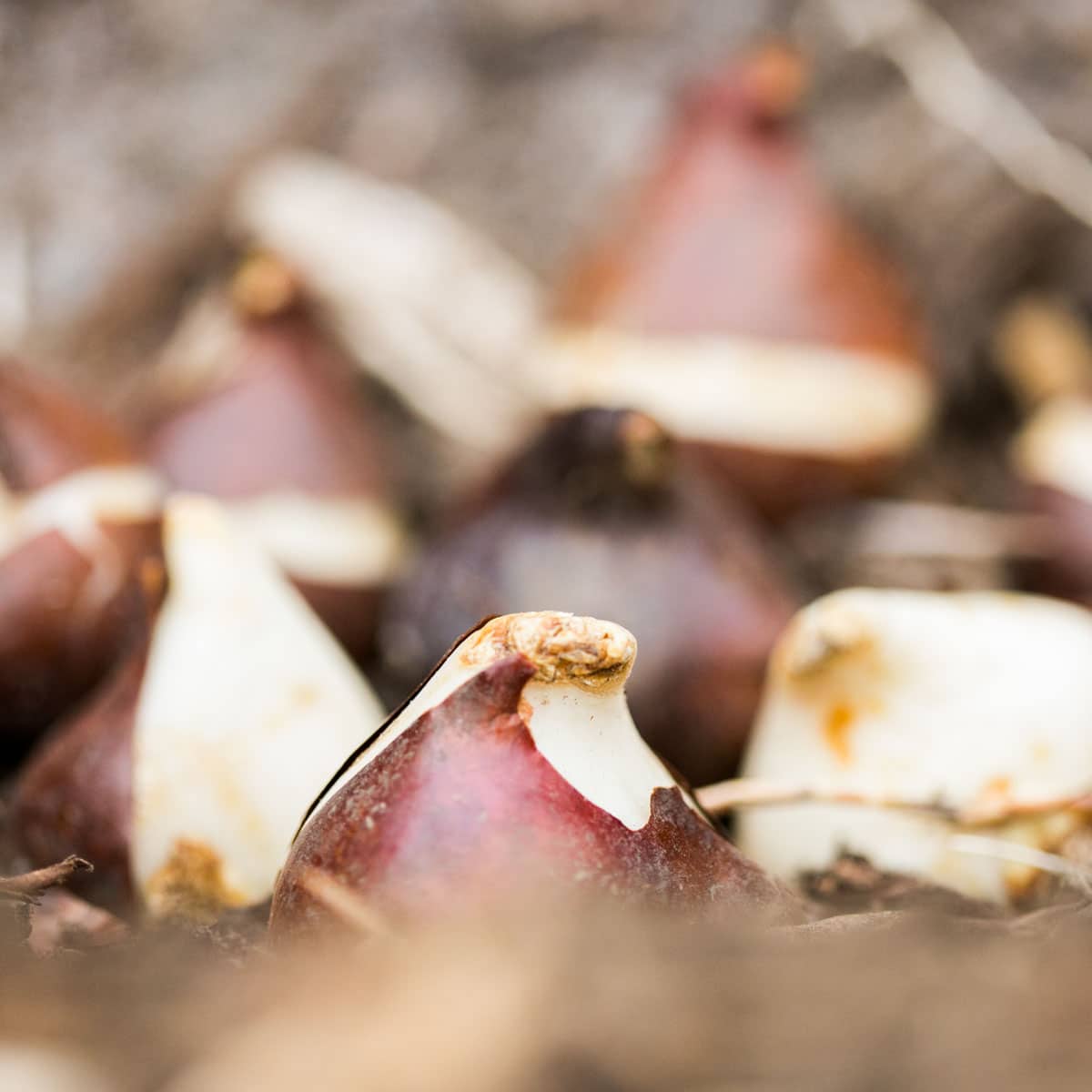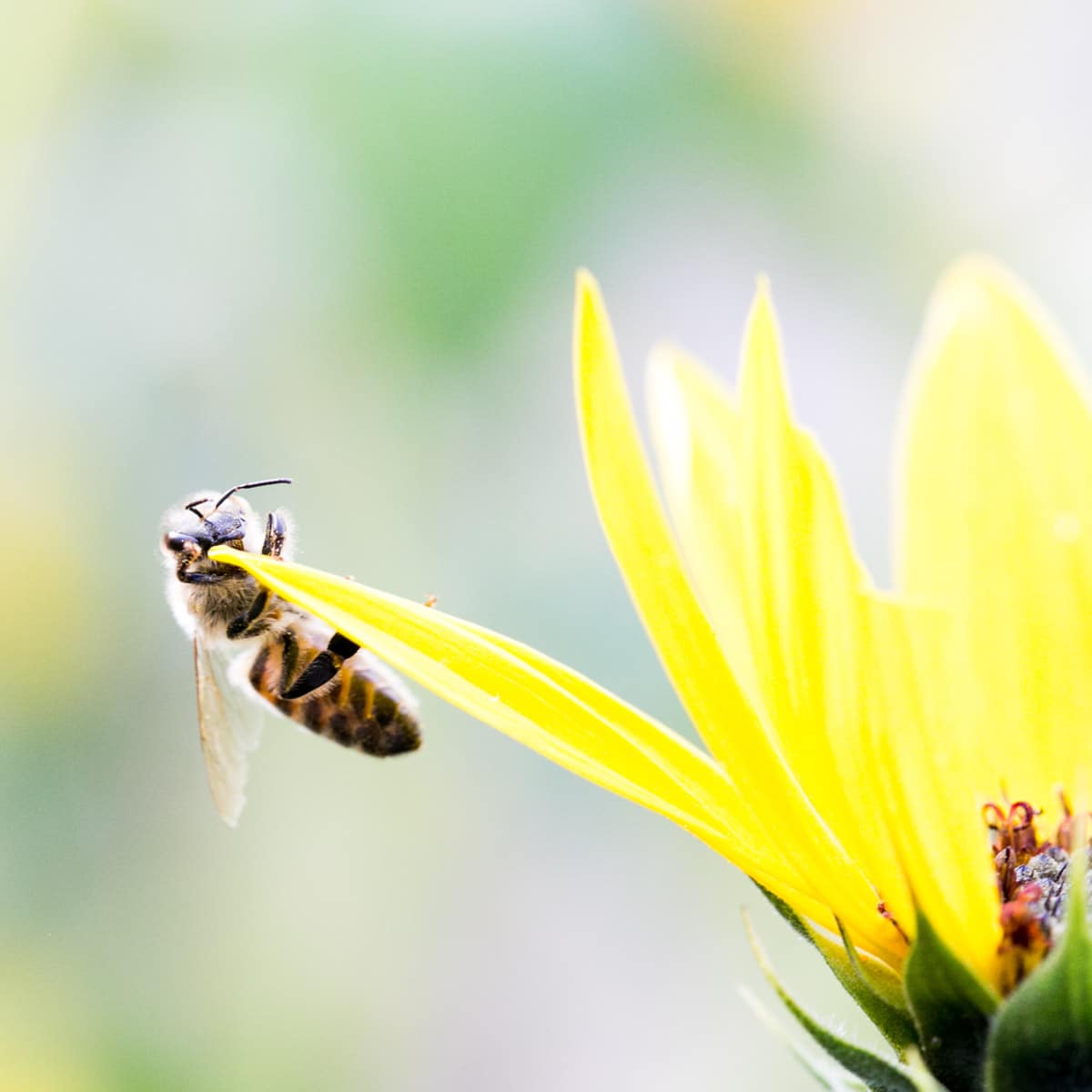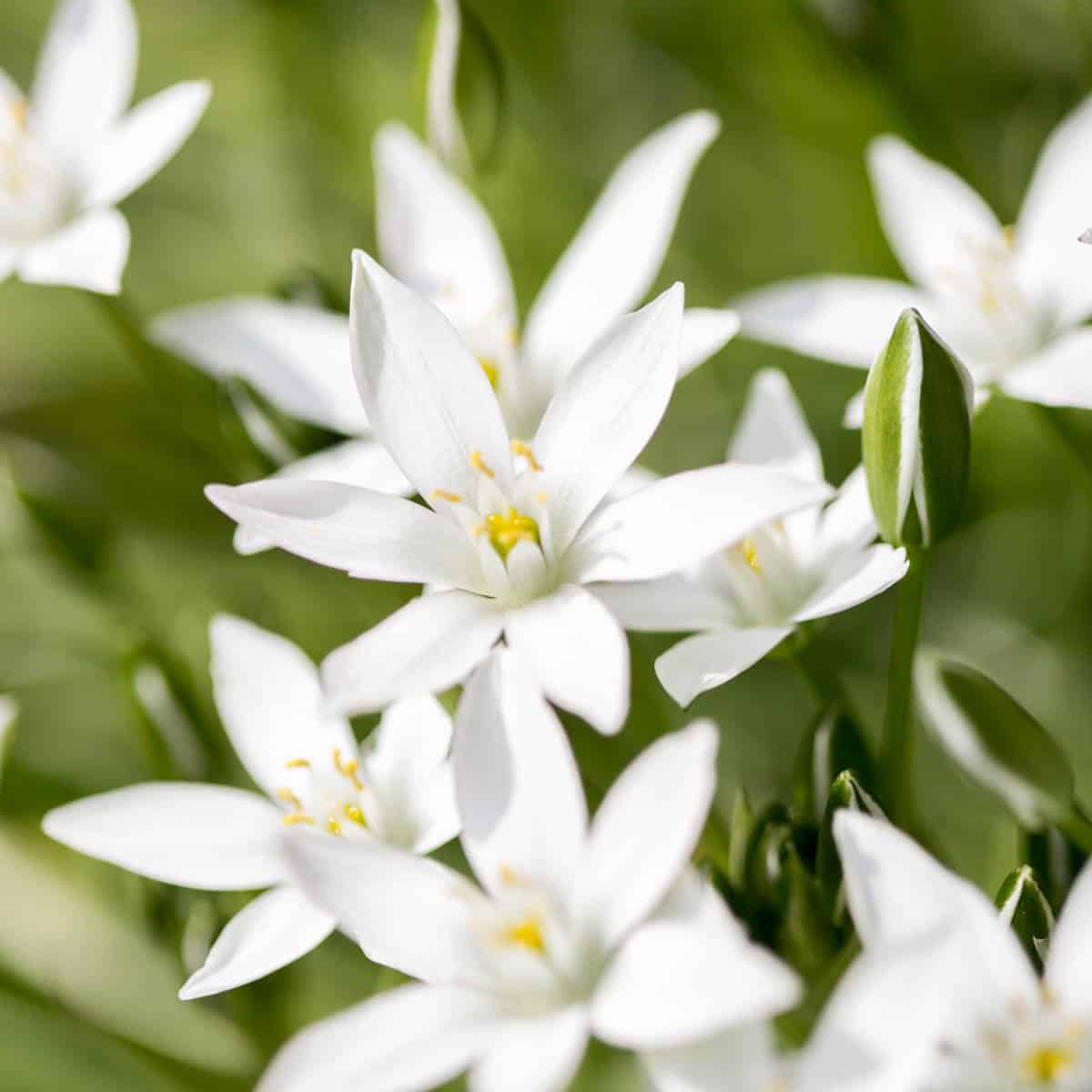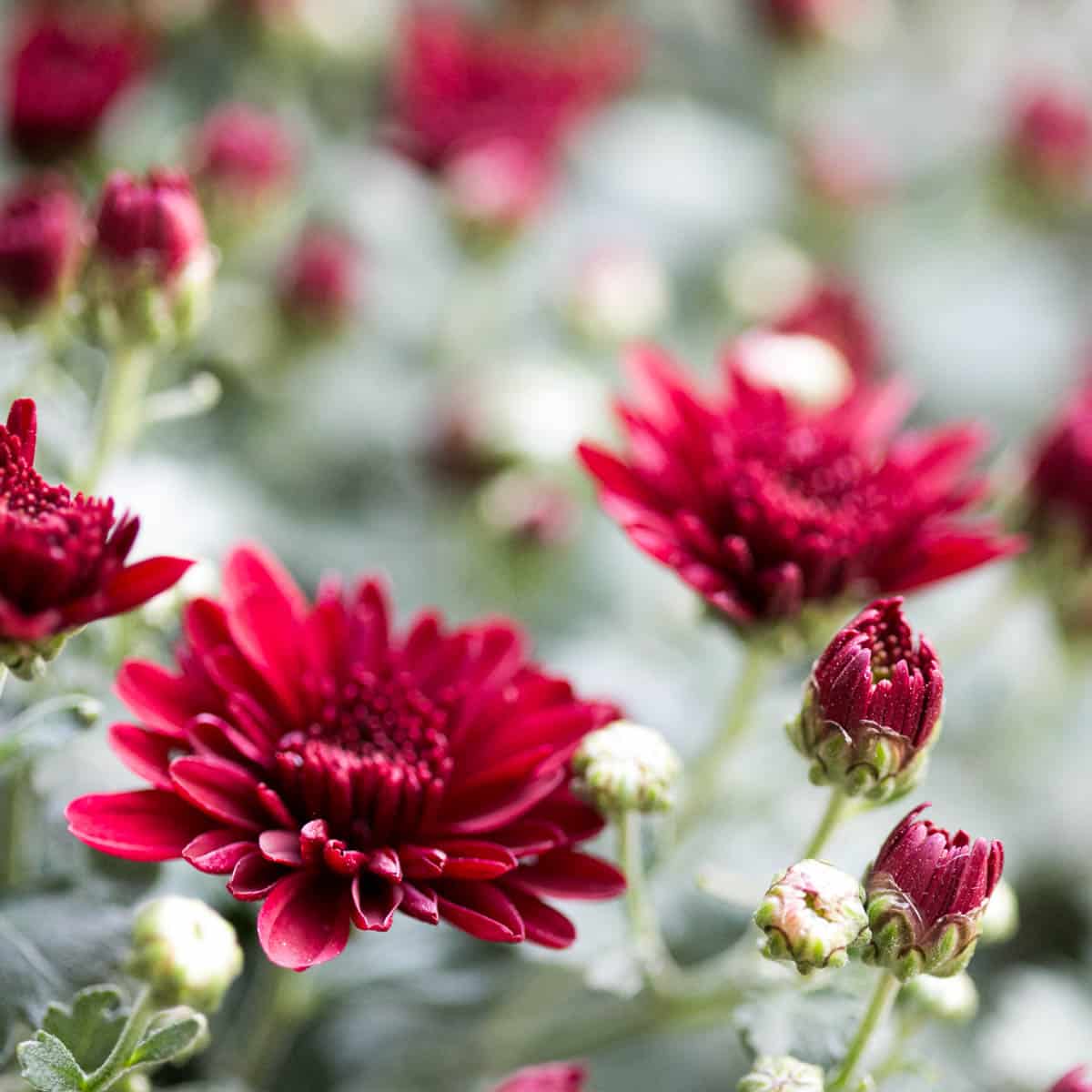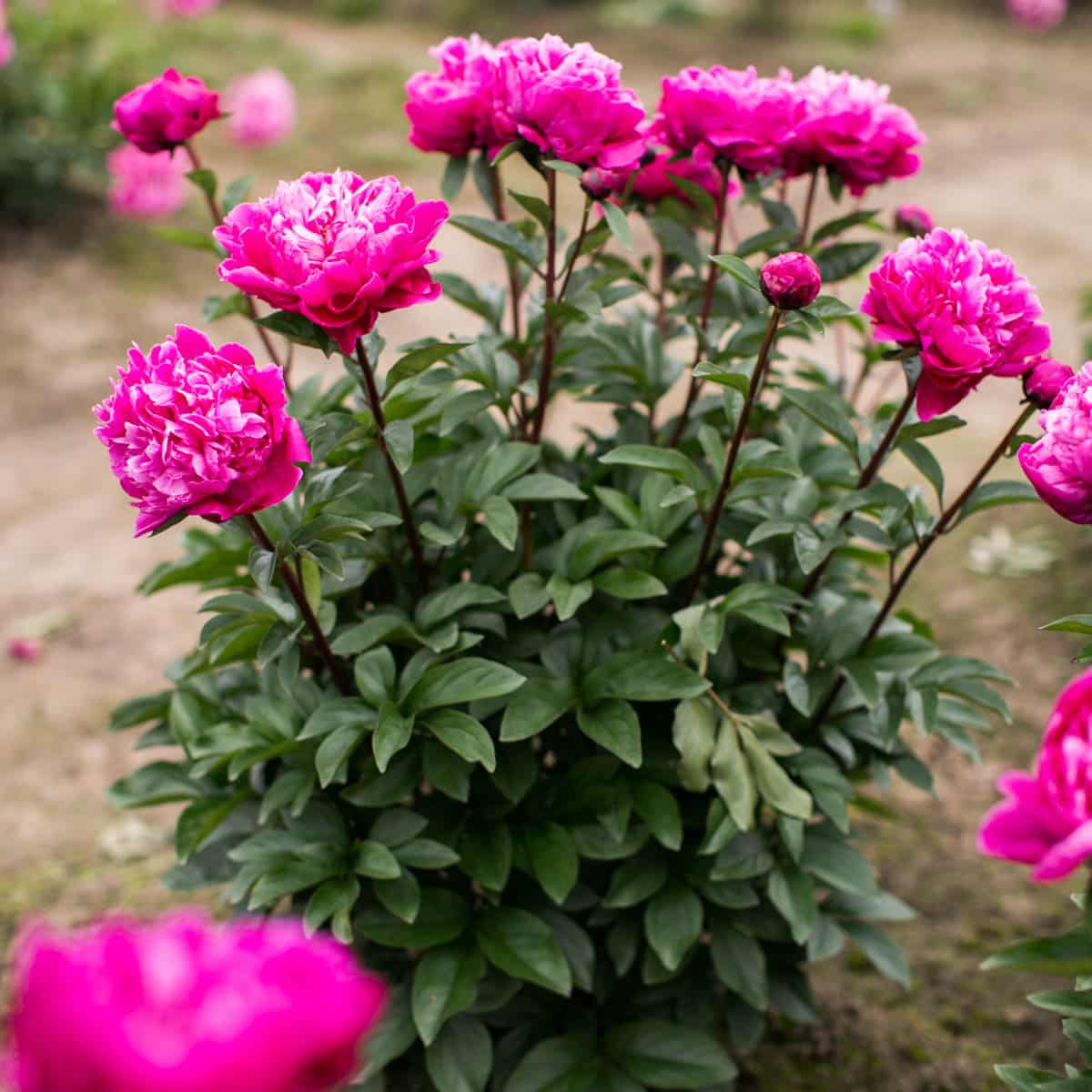Parts Of A Sunflower (With Pictures)
Walk through the parts of a sunflower with us today!
Sunflowers are essential to a thriving garden. They provide food for birds and wildlife and attract pollinators like bees and butterflies. Growing to towering heights, these iconic flowers are easy to grow and thrive all over the United States.
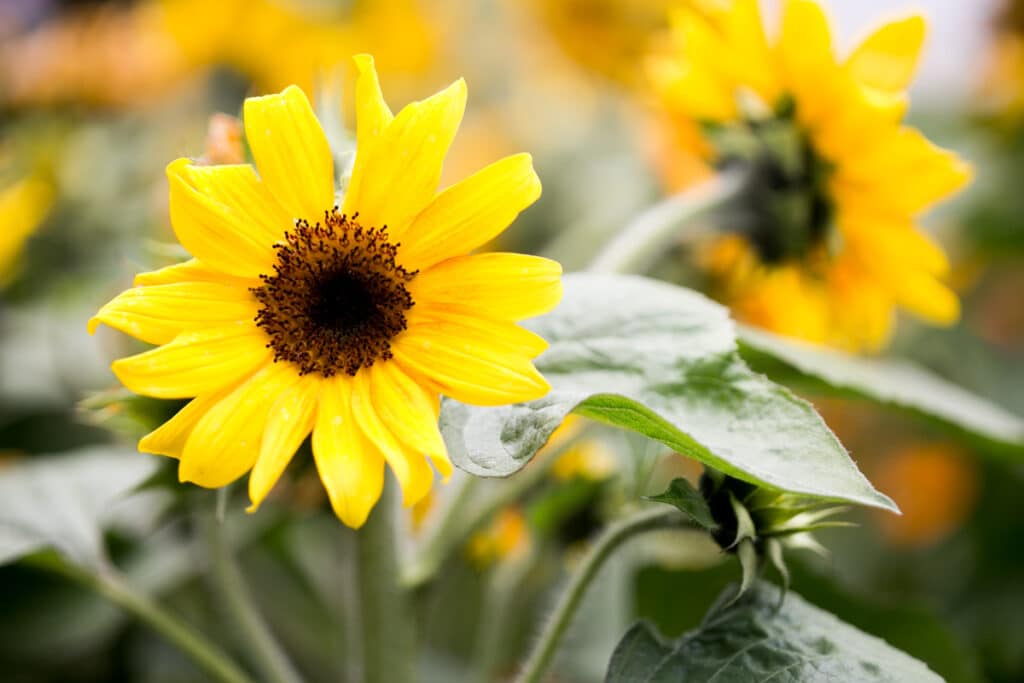
Today are diving into each essential part and functions of this nostalgic flower.
This guide is written to encourage avid gardeners to get to know their flowers more scientifically. It also serves as a resource for kiddos wanting to learn more about the anatomy of a sunflower.
We encourage seasoned flower growers to share their love for flowers with a budding young gardener… learn together!
Sunflowers are part of the Asteraceae family, which is the second largest plant family and contains 20,000 different species. As with all plants, there is much more to the sunflower than meets the eye…. For example, did you know that each sunflower is actually hundreds of tiny flowers joined together in one vibrant yellow orb?
Read on to learn more about the anatomy of this beautiful flower.
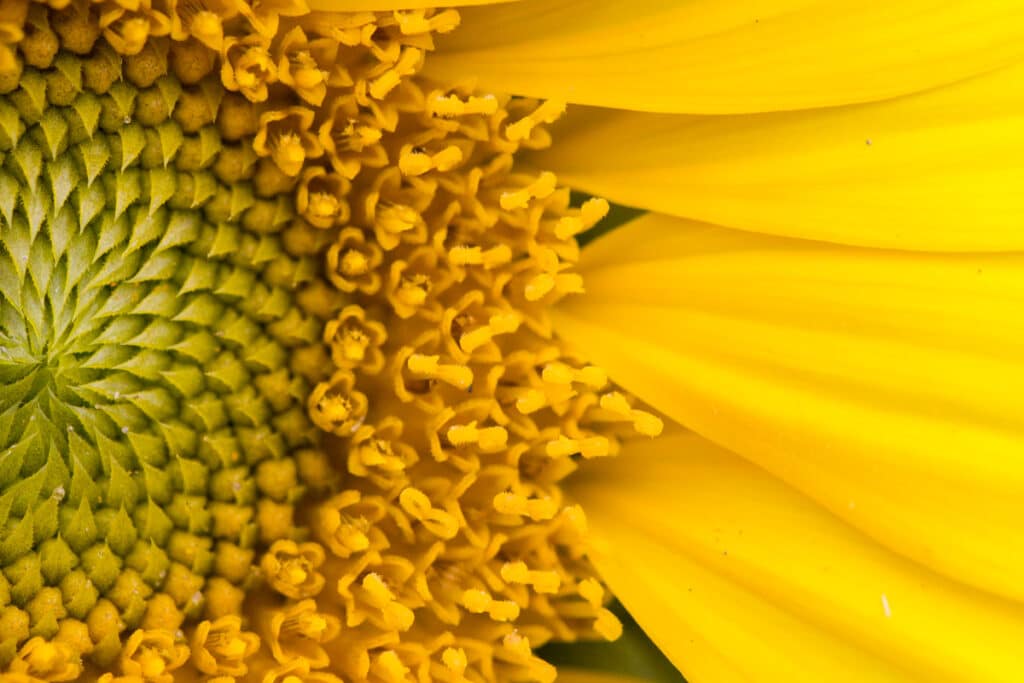
Read all about adorable miniature sunflowers here!
Parts Of A Sunflower + Functions
The key parts of a sunflower are: structural support, leaves and buds, disk flowers, ray flowers and of course, seeds.
The structural support consists of the taproot, additional root system, and stalk.
The anatomy of a sunflower is fascinating and simple to understand:
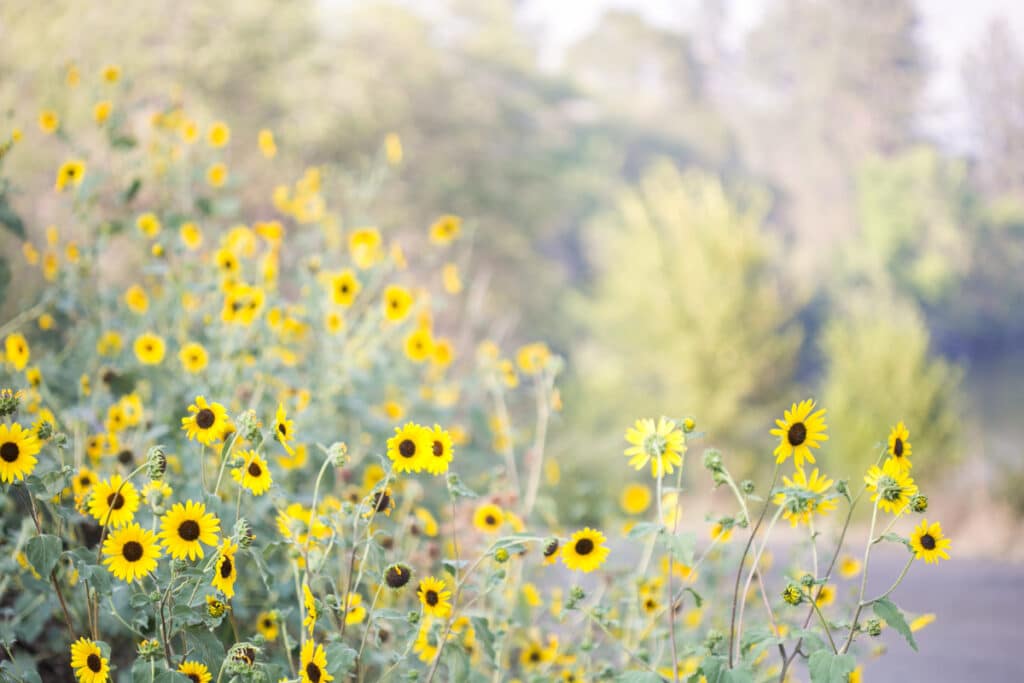
Roots
The root system collects essential nutrients and water to fuel the plant. Each sunflower plant has one taproot, or main root.
This taproot is the primary root that originally grows from the sunflower seed, reaching deep into the soil for life support in the form of nutrients and water. From there many smaller, hairy roots branch off and create the root system.
In ideal soil that is loose and fertile, the root system will continue to growing downward. In dry, hard soil the taproot growth is stunted, and may grow horizontally instead of down. This can also happen when growing sunflowers in containers.
The purpose of the taproot and additional root system is to collect nutrients, gather water, and provide strength for the growing sunflower stalk. The root system is the anchor for the entire plant, providing nourishment and a strong foundation of growth.
Sunflower roots can grow very deep, up to 5 feet! The root system is large and complex.
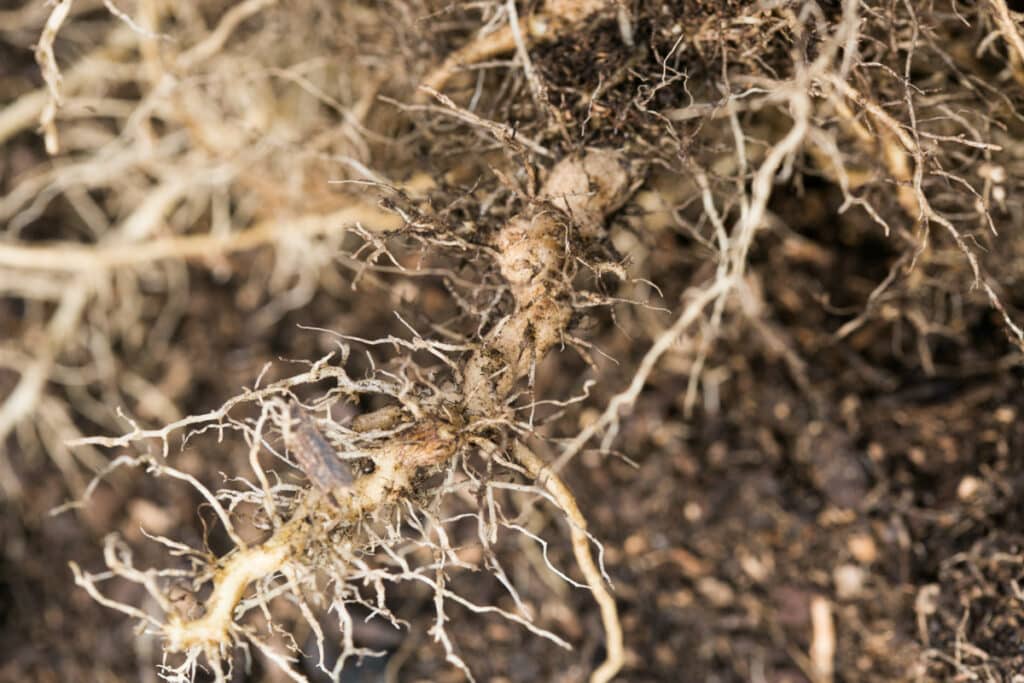
Stalk
Reaching for the sky, the stalk weaves its way upward and is sturdy with leaves branching outward.
The thick sunflower stalk provides the support that the large sunflower head needs. It also provides structure for the leaves of the sunflower plant to grow on. This stem contains chambers that transport minerals, sugar and water from the soil into the plant.
In this way the stalk acts as the lifeline for the entire plant: it is the structural support for the heavy flower head as well as the transportation system for all essential nutrients the sunflower needs to thrive.
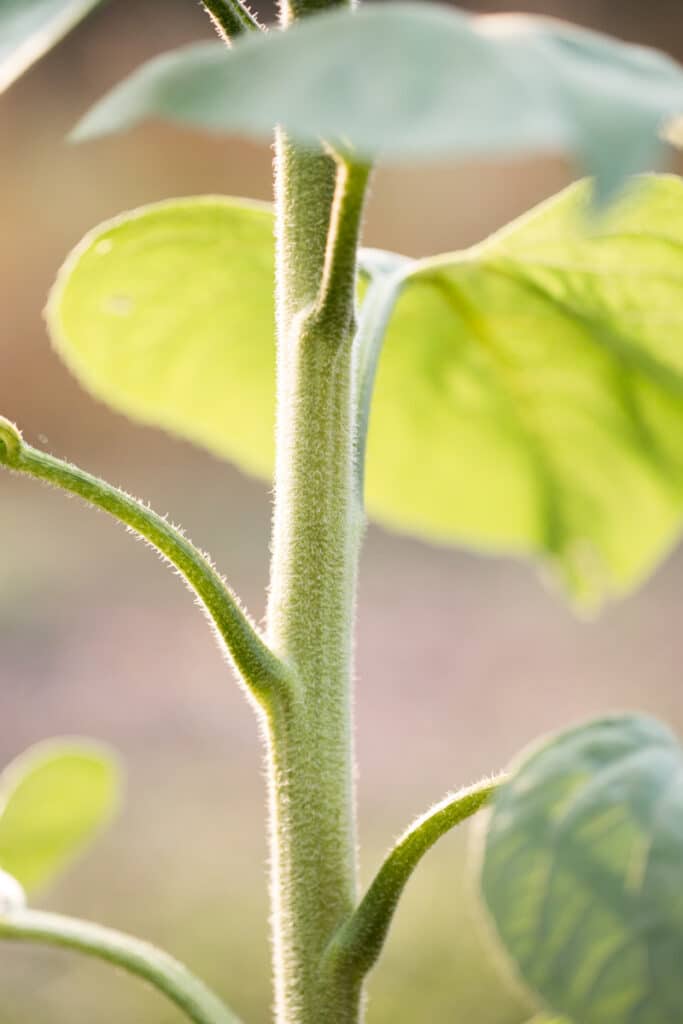
Leaves
Sunflower leaves are large, diamond shaped and veiny. They can be coarse and bristly with tiny hairs.
The leaves of the sunflower plant have an essential job: providing photosynthesis! Sunflower food is made within the leaves. Photosynthesis is the process in which plants collect sunlight and use it to synthesize food from carbon dioxide and water. The final product is sugar that the sunflower can use as food.
As you can imagine, the large, beautiful leaves have a substantial job in supplying energy for tall sunflowers towering 9+ feet tall!
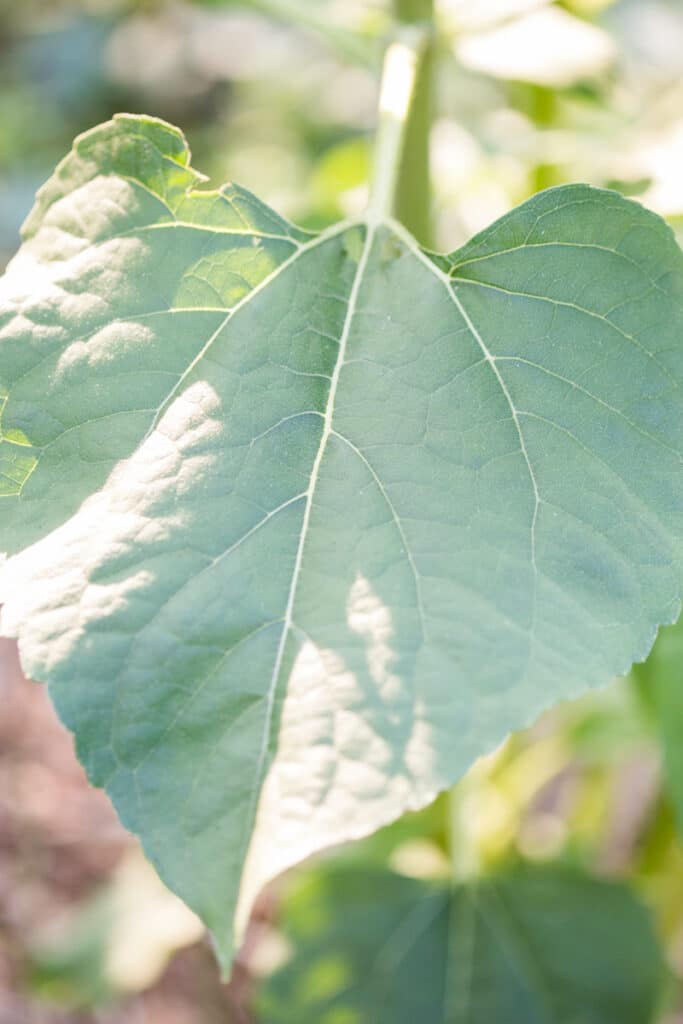
Sunflower Head
Sunflowers are part of the Aster family. Members of this family have flower heads that are composed of many small flowers. So when you look at a large sunflower, you are really looking at a beautiful mosaic of many tiny flowers.
It may come as a surprise that sunflowers are not one flower, but a plant made up of hundreds of small flowers. This is one of the beautiful complexities of nature!
The small flowers that head are also called florets. Ray flowers grow on the outer circumference of the flower head, and within the center disk flowers grow.
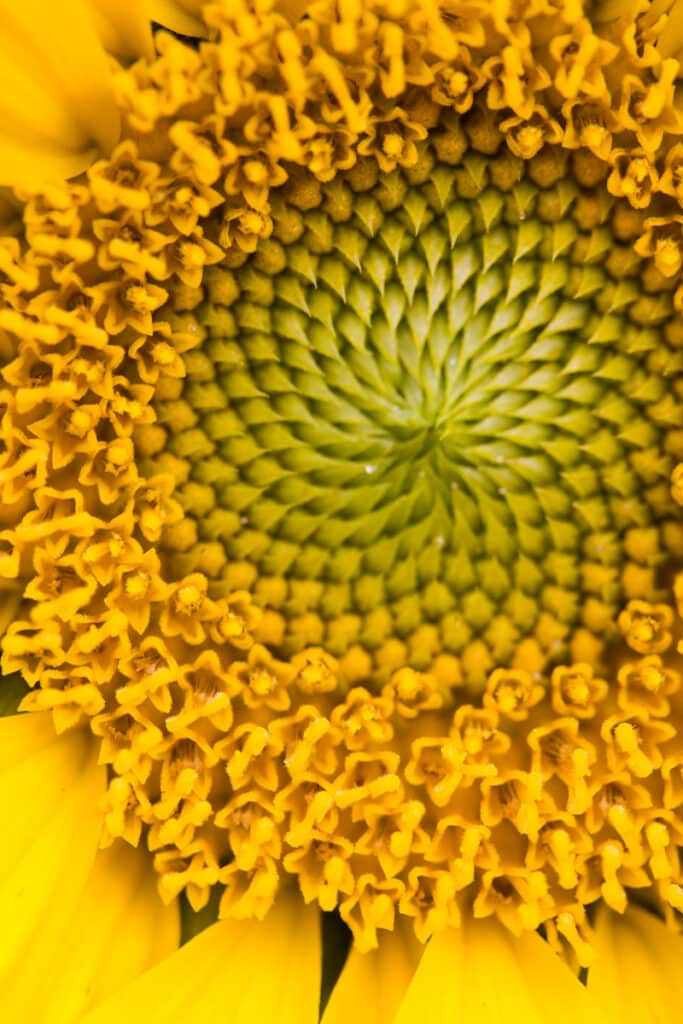
This explanation from the University of Melbourne perfectly explains the sunflower structure:
“The sunflower as we know it is biologically a capitulum, which is botanical terminology for “flower head”. The mini flowers housed upon the structure are called florets, of which there are two types. The disc florets make up the brown mass in the centre of the sunflower, and the ray florets make up the ring of characteristic yellow petals on the outside.”
Ray Floret
A ray flower, or ray floret, is the outer ring of flowers on a sunflower head. These flowers are often thought of as petals, but they are really individual flowers that serve to attract pollinating insects.
Being ornamental, the main function of the ray floret is to attract pollinating insects that can help promote the survival of the sunflower species. The ray florets are sexually sterile.
In the image below, you can see all of the ray florets beautifully showcasing the sunflower head in a ring around the outer edge.
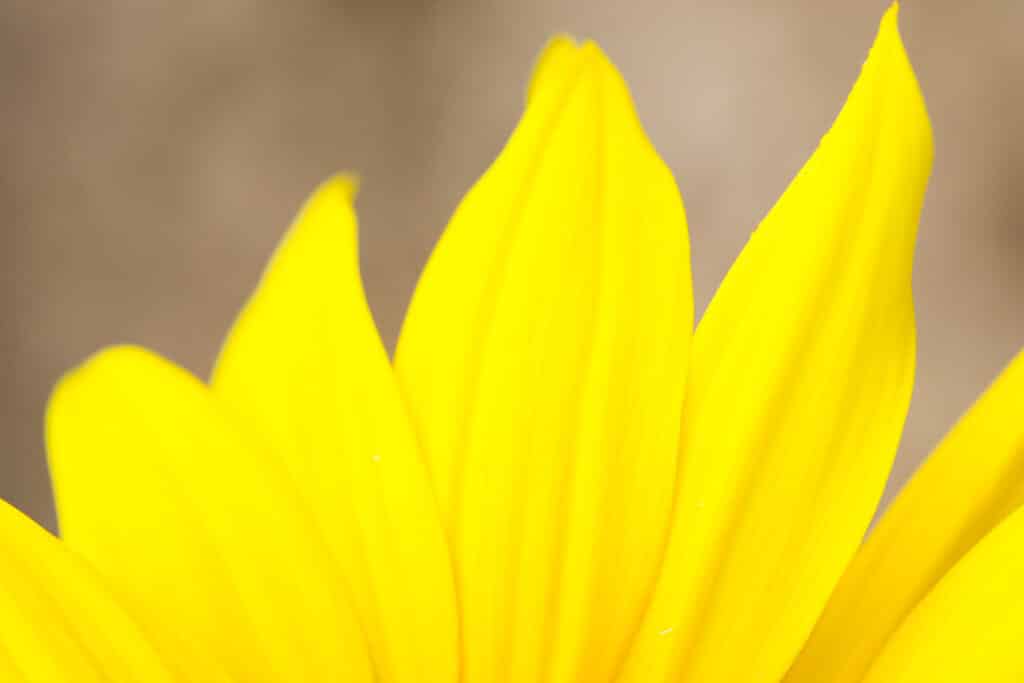
Disc Floret
The disc florets are the reproductive flowers, containing both male and female structures. Large, single head sunflowers may have thousands of disk florets! On branching sunflowers with multiple head the amount of disk florets is much lower.
The disk florets open from the outer periphery of the head, then the inner flowers begin to open in sequence. The ovary of the disk floret develops into the seed that are consumed by birds, mammals and humans.
The seeds that are not eaten will fall to the ground with the goal of creating their own tap root and creating a whole new plant!
Disk flowers can be yellow, dark brown, or black depending on the type of sunflower grown.
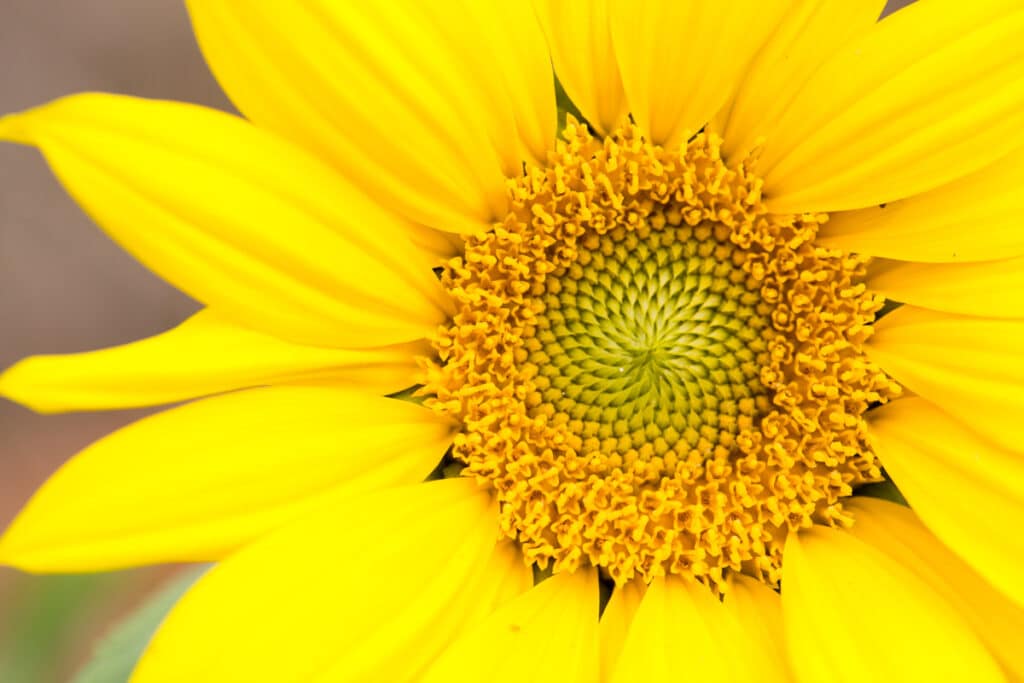
Parts Of A Sunflower Diagram Worksheet (Free)
When exploring sunflowers with children, it can be helpful to study the topic from a variety of angles. Planting sunflowers is an easy and fun way to get interactive learning in. Reading and writing is also very useful in learning and memorizing the parts.
We created this simple worksheet for you to share with grade school level kiddos.
Try checking out a few books at the local library, planting your own sunflower seed, and then labeling the worksheet together. Watch a few videos on youtube about sunflowers as well, and you’ve got a whole unit study in the bag!
Right click on the image, then hit save or print.
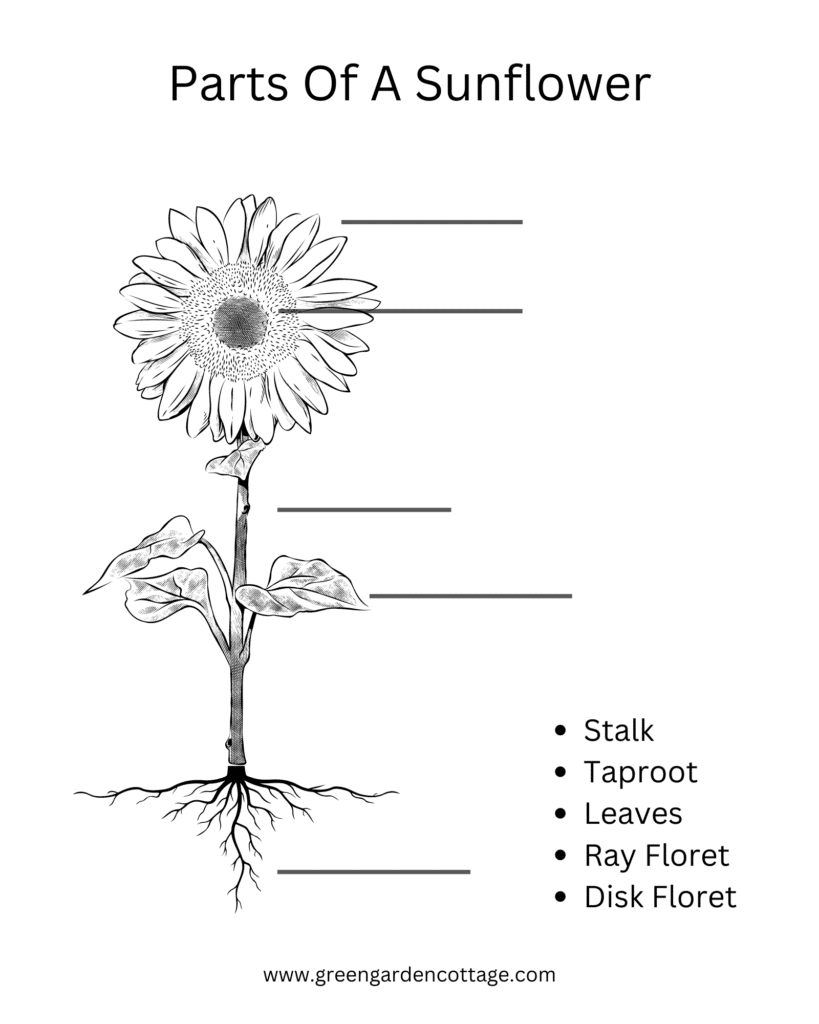
Conclusion
Bright and beautiful, sunflowers are one of God’s best flowers. We love that these cheerful orbs are really a happy club of hundreds of tiny flowers! Thank you for joining us in studying the parts of a sunflower.

